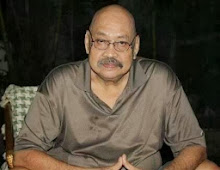Chessmoso
Friday, October 31, 2014
THE World Chess Championship 2014 will be a rematch between world champion Magnus Carlsen of Norway and challenger Vishy Anand of India and will be held from Nov. 7 to 28 in Sochi, Russia.
The match will consist of 12 games and if necessary, tie-break games. The time control for the “classical” portion of the match will be 120 minutes for the first 40 moves, 60 minutes for the next 20 moves and then 15 minutes for the rest of the game. They will also have an increment of 30 seconds per move after move 61.
Both Carlsen and Anand played in the 2013 Championship with Anand as the reigning world champion and Carlsen as the challenger. Carlsen easily won, 6.5-2.5 This will mark the first time that the same opponents will meet in consecutive World
Championship matches since Garry Kasparov and Anatoly Karpov.
Championship matches since Garry Kasparov and Anatoly Karpov.
Anand won the 2014 Candidates Tournament, an eight-player double round robin
tournament that took place in Khanty-Mansiyk, Russia from March 13 to 31 early this year for the right to challenge Carlsen.
tournament that took place in Khanty-Mansiyk, Russia from March 13 to 31 early this year for the right to challenge Carlsen.
Statistics show that Anand and Carlsen faced off 79 times across all time formats. Importantly, in the 38 times that the two met in classical format, Anand has won six, Carlsen 7 and the rest were draws.
The prize for this year is “only” $1.5 million compared to $2.5 million when the match was held last year in Chennai. Carlsen is reportedly not happy and almost forfeited.
Beginning 2010, the Women’s World Chess Championship will be held annually in alternating formats. In even years a 64-player knockout system will be used and in odd years a classical match featuring two players will be held.
The 64 players are selected through national chess championships, Zonal tournaments and continental chess championships. The 64 will be from Europe (28), Asia (12), Americas (8) and Africa (3). The rest of the field will be the semifinalists of the women’s world chess championship in 2012, the 2012 and 2013 world girls champions, Fide nominees and the rest by ratings.
With the Women Grand Prix over, the 2015 match-up is already known and that will be between Hou Yifan of China and Koneru Humpy of India.
LOCAL. Cepca’s old vanguards came out from their respective hideouts to try out their luck in the cash-rich October Edition of the club’s monthly Qualifying Tournament.
Seen were Victor Sepulveda and Sergio Borres of MCIAA, Pastor Henry Cariat, Manny Manzanares, Joe Atillo and Jun Pasion.
The club would like to extend its appreciation to the benevolent sponsors--our US-based members Jojo Clamor Dondon, Mitch Vergara, Gilbert Ababat and locals Handuraw, Ross Yamyamin and Serge Borres.
Shaira Mae Monsalud of the University of San Carlos placed fourth with 4 points in five grueling rounds without a single loss. She also bagged first place in the Ladies Category together with Aireen Robillos (USJR) and KC Morala also from USC.
Rey Flores and Ross Yamyamin tied for first, while Eduard dela Torre is the qualifier for October.
Cepca also had new members and these are Elmer Odango, a former OFW singer for 20 years and composer, Louie Alalim of the PNP Regional 7, and Ryan Cortes an IT specialist and former varsity player of Cebu Institute of Technology.
(boypestano@gmail.com,www.chessmoso.blogspot.com)
The Women Championship 2014 is even worse. It was originally scheduled from Oct. 11-31 this month. Problems in finding a sponsor and host city eventually forced FIDE to announce the postponement of the Championship.
With the tournament postponed a “few months” it may actually be played in 2015. During the Fide Elections in the last Olympiad both Kasparov and Ilyumzhinov promised to attend to this problem.
